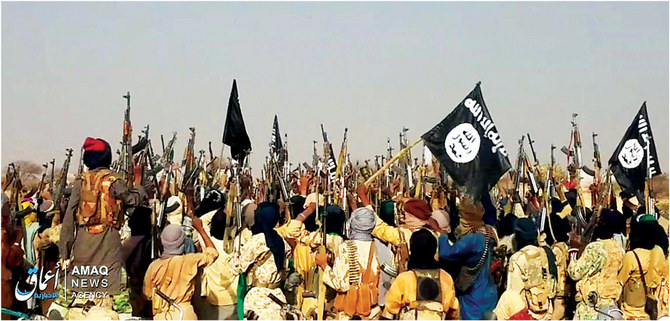
he Chinese assault on Indian troops near the Galwan Valley, along the Line of Actual Control (LAC) that serves as an unofficial international frontier between the two countries, is, for India’s political elite, a reminder of an awkward reality. India’s control over its border with China is contingent on China’s geopolitical priorities, not India’s own military capacity. This has been true for more than half a century. In 1962, 15 years into India’s life as an independent nation, a dispute over Aksai Chin, the north-eastern “ear” of Kashmir, led to a short war with Mao Zedong’s China and a humiliating defeat for India. China’s military edge along this huge disputed frontier has kept successive Indian governments on tenterhooks ever since.
Dealt a poor hand, India has played it reasonably well. The 20 military casualties in the recent violence is its largest death toll in relation to China since 1967. Keeping the peace has involved some imaginative diplomacy. After a border confrontation in Arunachal Pradesh in 1986, India’s then prime minister, Rajiv Gandhi, visited China in 1988 to thaw out a relationship that had been in deep freeze since the 1962 war. His visit led to a peace agreement signed in 1993 by his successor, Narasimha Rao, which made the LAC the basis for a stable and relatively peaceful status quo.
In the 30 years since Gandhi’s visit, the asymmetry between the two countries has grown. China is now an economic superpower that has completely overhauled and modernised its military since Xi Jinping became the general secretary of the Chinese Communist party in 2012. Despite India’s economic progress since it liberalised its economy in the early 90s, the gap between it and China in terms of per capita income, infrastructure, both military and civil, and science and technology has a grown at a rate that embarrasses India’s political elite and demoralises an otherwise bullishly nationalist middle class.
Narendra Modi came to power promising to abandon India’s posture of military restraint in the face of border violations by its neighbours. This was mainly directed at Pakistan but he also indicated that India would take a harder line with Chinese expansionism. But like all Indian heads of government, Modi was acutely aware of the need to manage relations with China: Xi was favoured with a state visit in the first year of Modi’s prime ministership. Xi arrived but, in a striking example of the brutal realpolitik that has characterised his time at the top, his visit to India was shadowed by a Chinese military incursion into Ladakh. It was as if Xi was personally putting Modi on notice.
Since then Modi has had some political success in selling himself as a proactive guardian of India’s borders, particularly in relation to Pakistan. India’s “surgical strikes” in 2016 in response to Pakistan-sponsored terrorism in Kashmir burnished the prime minister’s reputation for breaking with a timorous past even if the military damage done by these strikes was disputed. The air strikes on Balakot in 2019 in retaliation for a suicide bombing that killed Indian soldiers in Kashmir helped Modi win an absolute majority in last year’s general election. Despite the air strikes reportedly missing their targets and India having a fighter plane shot down, Modi’s willingness to take on a nuclear-armed country won him political acclaim at home.
This muscular response wasn’t confined to Pakistan. In June 2017, Indian troops entered territory disputed by China and Bhutan to prevent Chinese soldiers from building a road there. India claimed locus standi as a treaty ally of Bhutan and the confrontation ended in August when both sides withdrew. Encouraged, perhaps, by the success of the Doklam intervention, India’s home minister, Amit Shah, declared in parliament in December that Ladakh, one of the two centrally administered union territories carved out of the erstwhile state of Jammu and Kashmir, would be an integral part of India. He clarified that Ladakh would include Chinese-controlled Aksai Chin, the territory over which the catastrophic 1962 war was fought. “We will,” declared the home minister repeatedly in the course of his speech, “give our lives for it.”
On Wednesday, the Indian government announced that several of its soldiers had, in fact, given their lives in a horrific border confrontation. After weeks of denying reports that the Chinese military had encroached on Indian-controlled territory in Ladakh, the government admitted that 20 soldiers, including a colonel, had been killed. The grotesque footnote to this news was that this death toll had been achieved without a shot fired in anger. Indian troops had tried to monitor a mutually agreed withdrawal without provoking a shooting war. Then, in unexplained circumstances, they had been outnumbered and bludgeoned to death by Chinese soldiers armed with clubs wrapped in barbed wire.
The prime minister broke his silence on the stand-off by making a televised speech where, without mentioning China once, he said that India’s soldiers hadn’t been martyred in vain. He tried to balance India’s traditional wariness about escalating a no-win conflict against a more powerful enemy with his need to assuage the outrage of his domestic audience, accustomed as it was to his stance about aggressively defending “Mother India”.
He said that India sought peace but if provoked was capable of delivering an appropriate reply. Invoking India’s essentially peaceful nature was, perhaps, the pragmatic path, but coming in the wake of the murderous Chinese buffeting that had left a score of Indian soldiers dead, it was hard, even for an orator such as Modi, to argue that suing for peace was a “befitting” response. Confronted with the unchanging reality of China’s massive military superiority, India’s prime minister had run out of rhetorical road.
Modi needs to choose. He can either talk to China as Gandhi and Rao once did, to negotiate a new mechanism for sorting out border disputes; or he can explicitly commit India to an American-led alliance designed to contain China. Neither will be easy. A bullying China led by Xi might want unsettled borders to keep India off balance. An inward-looking US might not be a reliable ally when push comes to shove in the Himalayas. But these are, at least, real policy choices; swearing to defend India’s territorial integrity against an enemy that you dare not name, or denying that the Chinese encroachment happened at all (as Modi recently did), are not.
• Mukul Kesavan is an essayist and author who teaches history at Jamia Millia Islamia university in Delhi












